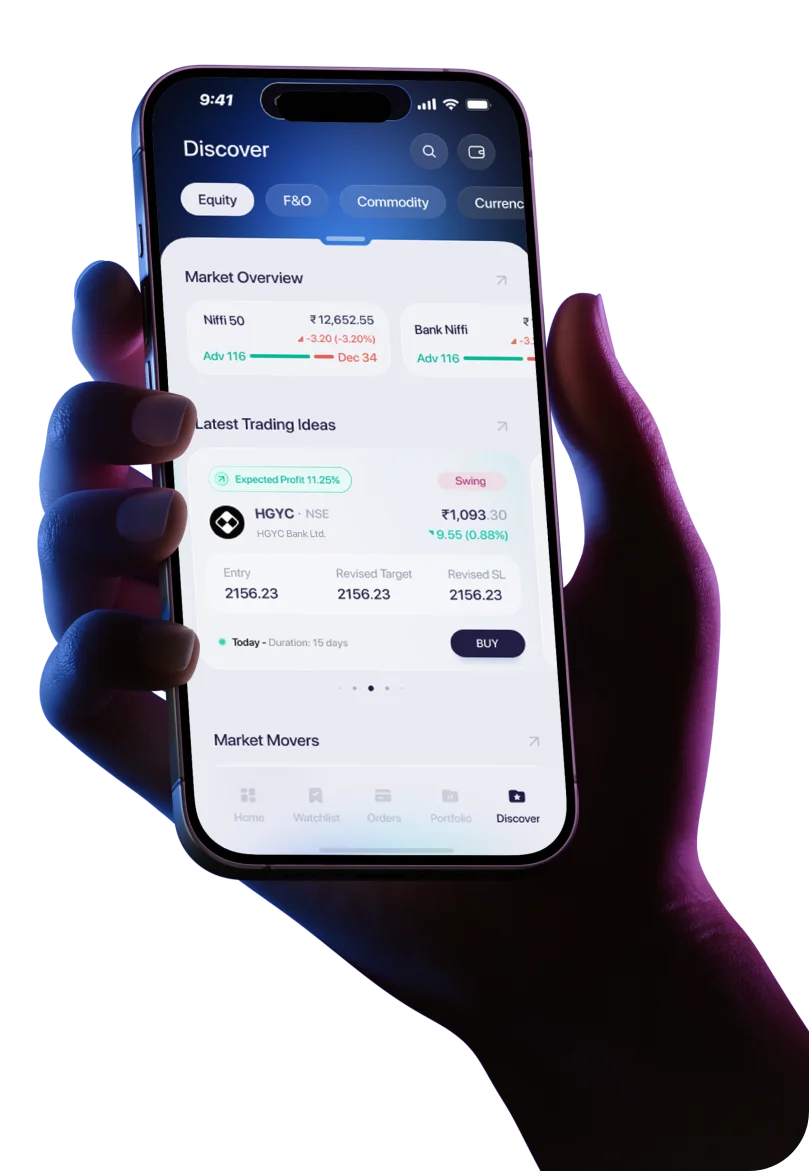The scalping trading strategy is a popular short-term approach used by traders looking to capture small price movements multiple times a day. This high-speed strategy aims to profit from tiny changes in asset prices over short time frames, ranging from a few seconds to a few minutes.
Due to its fast-paced nature, scalping is favoured by experienced traders who prefer to stay in and out of trades quickly. A key part of this strategy is using scalping trading indicators, which help in identifying entry and exit points with precision. These tools guide traders in making fast, data-driven decisions while managing risk effectively.
What is Scalping Trading?
Scalping is a short-term trading strategy that aims to profit from small price movements by executing a large number of quick trades throughout the trading day. Unlike day trading or swing trading, which seek larger gains from fewer trades, scalping focuses on micro price fluctuations and brief market inefficiencies. The core idea is to make many trades for small profits that can accumulate over time.
Trades in scalping typically last only a few seconds to a few minutes, making speed and timing critical. This strategy requires constant market monitoring, quick decision-making, and a strict exit plan to prevent small losses from outweighing gains. Scalpers often use short-term charts—such as one-minute, two-minute, or even tick charts—to identify entry and exit points with precision.
High-frequency trading environments with strong liquidity and volatility are ideal for scalping. These market conditions help scalpers enter and exit trades quickly without large price slippage. Since each trade generates only a small return, the effectiveness of a scalping strategy relies heavily on consistency, fast execution, and discipline.
How Scalping Works: A Step-by-Step Process
To apply a scalping strategy effectively, traders typically follow this process:
Identifying Market Trends
Scalping begins with spotting short-term trends using technical indicators. Traders often apply tools like RSI, MACD, Bollinger Bands, or the 5-8-13 SMA ribbon on one- or two-minute charts to catch quick price movements. These scalping trading indicators help identify momentum, reversals, and entry/exit signals.
Executing High-Frequency Trades
Once a trend is spotted, scalpers enter and exit trades rapidly, aiming to capture small price fluctuations. They operate in highly liquid markets like forex, large-cap stocks, or crypto, where tight bid-ask spreads and volume ensure fast execution. A reliable trading platform with direct market access is essential for efficiency.
Using Risk Management Techniques
Given the volume of trades and narrow profit margins, risk control is crucial. Scalpers use tight stop-loss orders and predefined exit levels to prevent losses from exceeding gains. Positions are typically not held overnight, reducing exposure to unpredictable price movements and preserving capital.
Best Scalping Trading Indicators
Successful scalping depends heavily on using the right technical indicators. Here are some of the most effective tools:
Moving Averages (MA): Help identify short-term trend direction using 9, 20, or 50-period moving averages.
Relative Strength Index (RSI): Detects overbought or oversold conditions in fast-moving markets. Using multiple timeframes enhances entry and exit precision.
Bollinger Bands: Measure market volatility and assist in setting trade boundaries. They can also help identify key support and resistance levels.
MACD: Confirms buy and sell signals through crossovers and provides insights into trend strength and potential reversals for more accurate entries.
VWAP (Volume Weighted Average Price): Assesses whether trades are being executed at favourable price levels relative to the day’s average.
Pros & Cons of Scalping Trading Strategy
Pros:
Quick profit potential:
The scalping trading strategy allows traders to capitalise on small price movements throughout the day, leading to the potential for frequent, smaller gains that add up over time. Scalpers aim for fast profits off reselling by taking advantage of a ticker tape that never stands still.
Works well in volatile markets:
Scalping strategies work best when strongly trending or strongly range-bound action controls the intraday tape. Scalpers can take advantage of numerous small price changes that occur in volatile markets.
High success rate with disciplined execution:
With a strict exit strategy and adherence to trading rules, a scalping strategy can have a high success rate by focusing on capturing small, more predictable price movements. Discipline is key for successful execution in this high-speed trading style.
Cons:
Requires constant market monitoring:
The fast-paced nature of scalping demands constant attention to the market and quick decision-making. Scalpers need to actively monitor price action and be ready to execute trades rapidly when opportunities arise.
Higher transaction costs:
The high trading frequency inherent in the scalping trading strategy can lead to significant transaction costs over time, as commissions are incurred on each trade. Scalpers should be mindful of these costs and potentially opt for brokers with low commissions.
Emotionally and mentally demanding:
Scalping is a high-pressure strategy that requires discipline, decisiveness, and analytical process. The need for rapid decision-making and constant monitoring can be emotionally and mentally draining
Best Markets & Assets for Scalping
Forex:
A scalping strategy works well in forex and it is Most favoured due to 24/7 availability, high liquidity and tight spreads, supported by real-time scalping trading indicators.
Stocks:
Volatile stocks are ideal for a scalping strategy using momentum-based scalping trading indicators. Particularly suitable with large-cap, high-volume stocks.
Cryptocurrency:
Rapid price swings in crypto make it suitable for a scalping strategy with volatility-focused scalping trading indicators.
Futures & Options:
Leveraged instruments like F&O are favoured in a scalping strategy, guided by volume and price action scalping trading indicators.
Scalping Trading Tips & Risk Management
Here are some scalping trading tips and risk management considerations based on the sources:
Use a tight stop-loss strategy to minimise risk by quickly exiting trades that move against your position in this short-term scalping strategy.
Focus on liquid assets with high trading volumes to ensure quick and efficient trade execution, a necessity for a fast-paced scalping strategy.
Maintain a strict exit plan for every trade, defining profit targets and loss limits, to avoid emotional decisions that can undermine your scalping strategy.
Avoid overleveraging: as while scalping might utilise leverage, excessive amounts can amplify losses significantly with this high-frequency scalping strategy. While the sources discuss technical indicators, they don't directly link the need to avoid overleveraging with specific scalping trading indicators.
Conclusion
In conclusion, the scalping trading strategy is a high-speed, short-term approach best suited for experienced and disciplined traders. By capitalizing on minor price movements, it offers the potential for frequent small gains throughout the trading day. However, success with a scalping strategy depends on strict discipline, emotional control, and a solid risk management plan. Traders must rely on custom-tuned scalping trading indicators such as RSI, Moving Averages, VWAP, and Bollinger Bands to make quick and informed decisions. The fast-paced nature of scalping requires constant market monitoring, precise entries and exits, and the use of tight stop-loss orders to protect profits. While it can be rewarding, scalping is not ideal for beginners and demands a well-practiced, systematic approach.




 Easy & quick
Easy & quick
Leave A Comment?